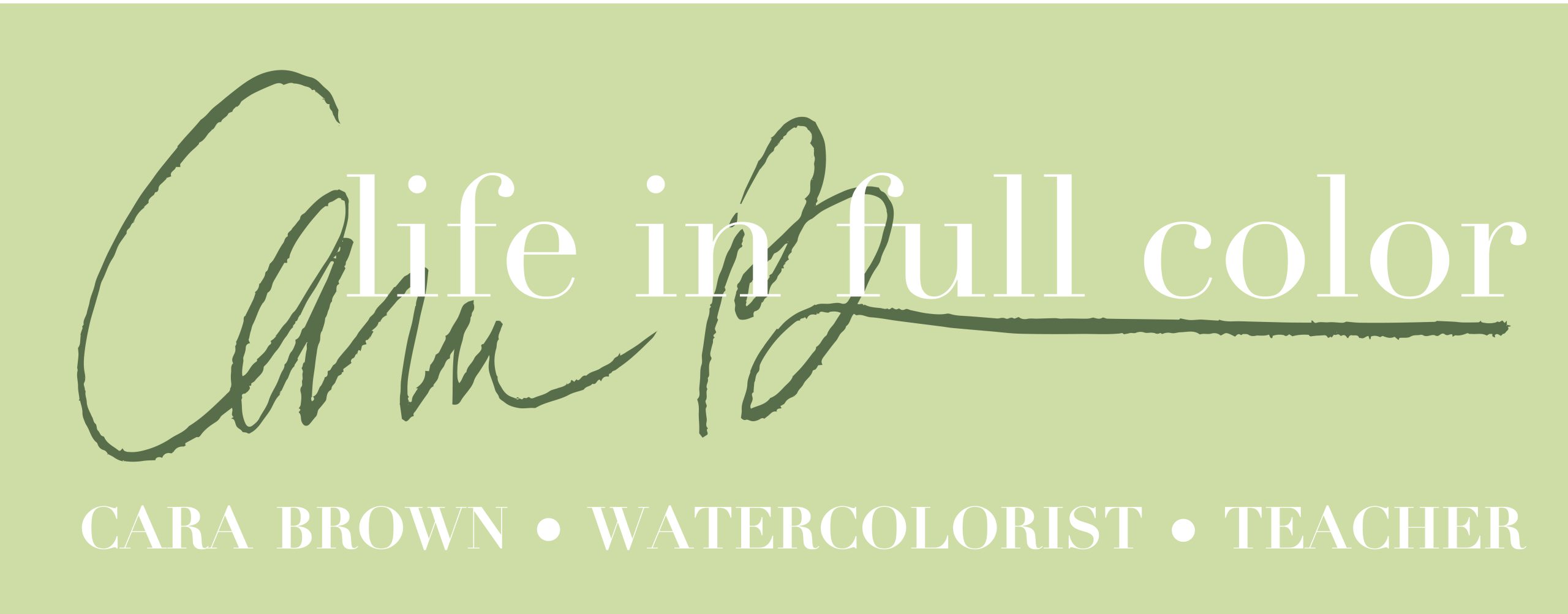workshops
Watercolor Basics and Beyond
Has watercolor been calling your name?
Do you look at paintings you admire and wish you could do that too?
If so, please read on…
Read on, even if there are voices telling you that you could never do this. I have a computer science degree and didn’t start painting until well into adulthood – I had no idea these paintings were inside me.
You just may surprise yourself.
Yes, watercolor has quite a reputation – everyone says it’s really difficult, but some of us have no choice – my voice doesn’t say “oil” or “acrylic”… it wants the fluid, transparent, delicacy of clear pigment on paper that is watercolor.
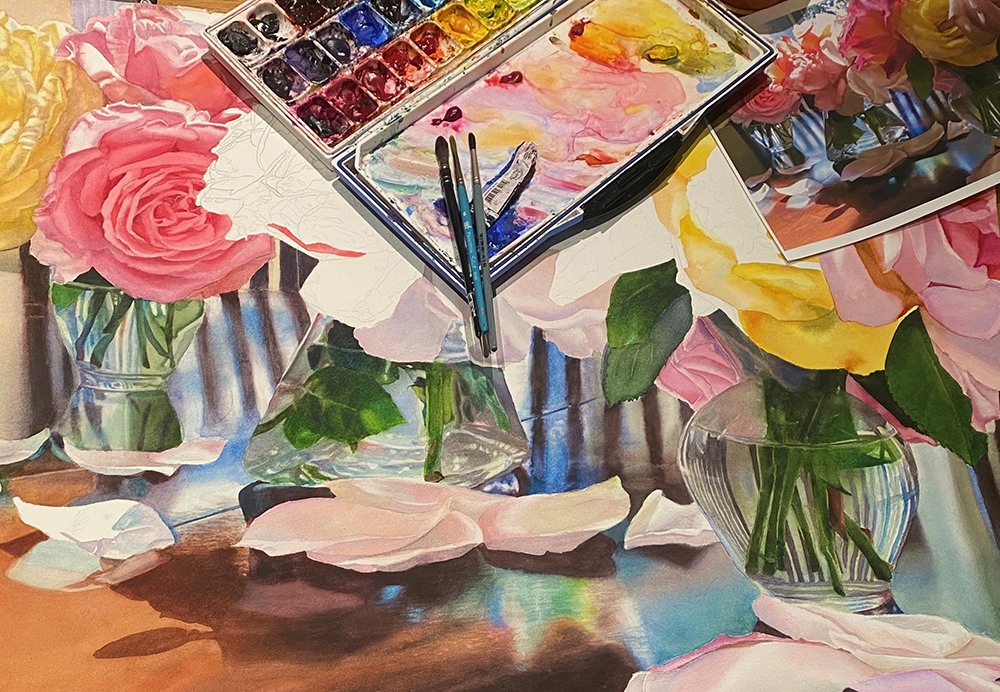
And, I’ve spent as much time observing how watercolor works as I have painting – I can show you how to make learning as easy as is possible. The process that results in these paintings of mine is very teachable. There are concrete skills that – with practice – you can learn too.
It may not happen right away, we all start at the beginning, but if your desire to paint is great enough to carry you through the early stages, you have the capacity to make art that will astonish you.
And what’s more I know how vulnerable we are when we are doing something new – learning to paint can feel really threatening. The safety of your creative-self is my first priority – the environment you learn in makes an enormous difference in whether or not you’ll keep going.
In light of all of this…I offer three weekend workshops, to get you going and support your journey as you learn to paint with watercolor.
These workshops are intended to provide the basics for those who are just getting started, but artists at all levels are welcome . There’s always more to learn – especially with watercolor. And practicing in a focused environment accelerates your learning.
Weekend One: Jumping In
Saturday-Sunday, June 28-29, 2025
The first weekend we will work on two foundational pieces: 1) how to work with our materials, brushes, paper paint and of course, water! and 2) how we use our eyes and brains to perceive to make representational artwork. Everything we do beyond this builds upon these two skillsets – and we keep practicing them as long as we keep painting.
It’s All About the Water
Watercolor isn’t watercolor without water! Learning this medium requires paying attention to how much and where the water is – on the palette, on the brush and on the paper. By watching me show you and practicing yourself, we will focus on this integral aspect of watercolor. There will be time to get started with and work on a painting of a subject of your choosing for those who want to learn by making a painting – which is how I like to learn.
Shape – Shade – Color
Every aspect of painting can be broken down to these three elements – and we get there via our right-brain mode. Learning to see and paint through this way of perceiving is a foundational piece of any representational art making. We spend most of our time in left-brain mode, so we really need the help to get there! Come practice seeing – and painting – what is actually there to see, rather than what we think is there. When we do, what we are painting comes through almost like magic!
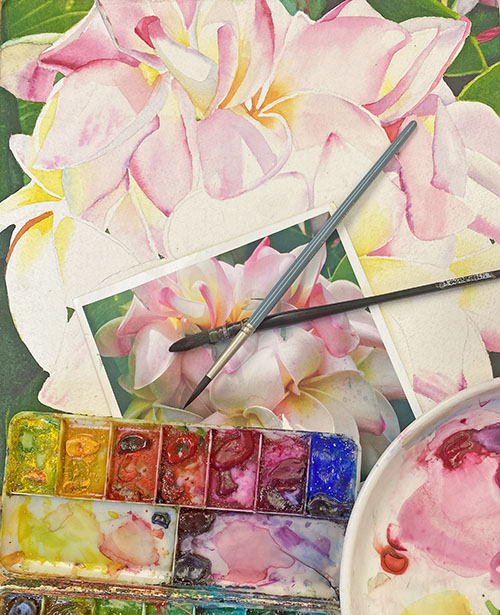
Weekend Two: Putting it in Practice
Saturday-Sunday, July 12-13, 2025
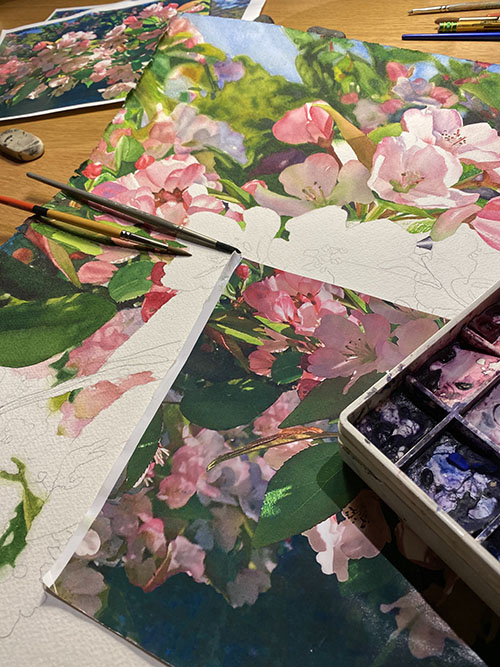
This weekend offers two ways to put into practice the foundtional skills introduced in the first weekend. The first day is an application of working with the physical substances – paper, paint and water, along with your brushes. The second is an application of how you see and respond to what you’ve already painted.
Fuzzy Backgrounds
A characteristic of my work – painting out-of-focus backgrounds – is a great way to practice working with the physical materials of watercolor. It’s quite easy to paint loose and free, paint running on wet paper whereever it will, which can be beautiful and interesting. It’s also not difficult – with the right knowledge – to paint with crisp and clean edges. But – soft edges with somewhat controlled shapes comes with practice – and a dose of patience!
Painting the Light
We live and make art in a world of light and dark. There is no light without darkness; creating contrast makes for compelling, dramatic paintings. We’ll look at how that is and will take a look at imagery that gives us a good starting place. Then we’ll focus on saving the whites and getting rich, luminous, interesting darks – and getting our darks dark enough – a real challenge in watercolor.
Weekend Three: Making it Real
Saturday-Sunday, July 26-27 2025
In Weekend Two we put the foundational skills learned in Weekend One and the practice and orientation in Weekend Twoto further use as we pay particular attention two common aspects of representational painting: 1) creating a sense of volume in our subjects and 2) working with our minds (which may be on overwhelm) when we are faced with a lot of detail in a painting. Learning these sets of skills allows us to make more realistic paintings.
3D in a 2D World: Creating Volume
It’s straight-forward to paint flat shapes – circles and ovals. But creating dimension – as in painting pieces of fruit, so that we can see and even feel the actual volume in the fruit requires us to pick up certain visual details in our subject matter to translate onto our paintings. Come see how this works and bring what you paint to life.
Lost and Found in the Details
The focal point of a painting often consists of “how-in-the-heck-do-I-paint-this?” detail: the centers of flowers, eyes, water drops, gnarly branches and leaves. It’s easy to get bogged down in rendering such detail – and it’s hard to have it not look contrived. Painting detail is tricky. It takes getting your brain oriented in the right way. I love to share this – my favorite part of the painting process.
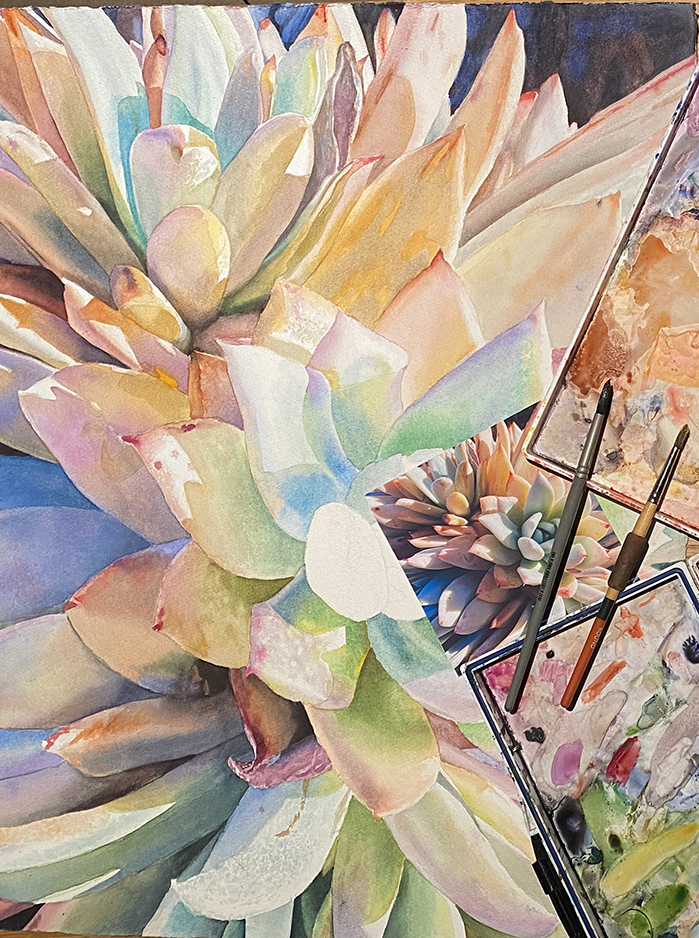
This series is all about how to paint. As far as what you paint, there are no specific subject matter assignments. I want you to paint what you are inspired to paint. I am available to work with you to select something to paint as needed for you to learn these concepts and skills.
These workshops are designed as a complete series, but you don’t have to sign up for all six sessions. Each weekend day can stand on its own.
Schedule & Cost
- Weekend One – Jumping In – June 28-29, 2025
- Weekend Two – Putting it in Practice – July 12-13, 2025
- Weekend Three – Making it Real – July 26-27, 2025
10:00am – 4:00pm
Please plan to arrive between 9:45 and 10:00 so we can start at 10:00. We will go no later than 4:00.
- $125 for a single workshop day
- $240 for two workshop days
- $345 for three workshop days
- $440 for four workshop days
- $500 for five workshop days
- $570 for the whole shebang
Use the button to make a payment online or mail a check to: Cara Brown, 250 Bel Marin Keys Blvd, Suite G3, Novato, CA 94949
(Please include your email address with your check.)
Location
You will love our beautiful new studio in Bel Marin Keys, in southern Novato. There are lunch options - short walks away. You also have use of the fridge, microwave and toaster oven.
Cancellation Policy
If you are unable to come to the workshop and let me know two weeks in advance, you can either apply the fee to a future workshop or I can refund you. If you cancel within 2 weeks and I have someone who can take your place, you can apply your fee to a future workshop. If I cannot fill your spot, the fee is not refunded.
If you paid for a workshop with a credit card, the credit card transaction fees will not be included in the refund.
Thank you so much for your understanding.
